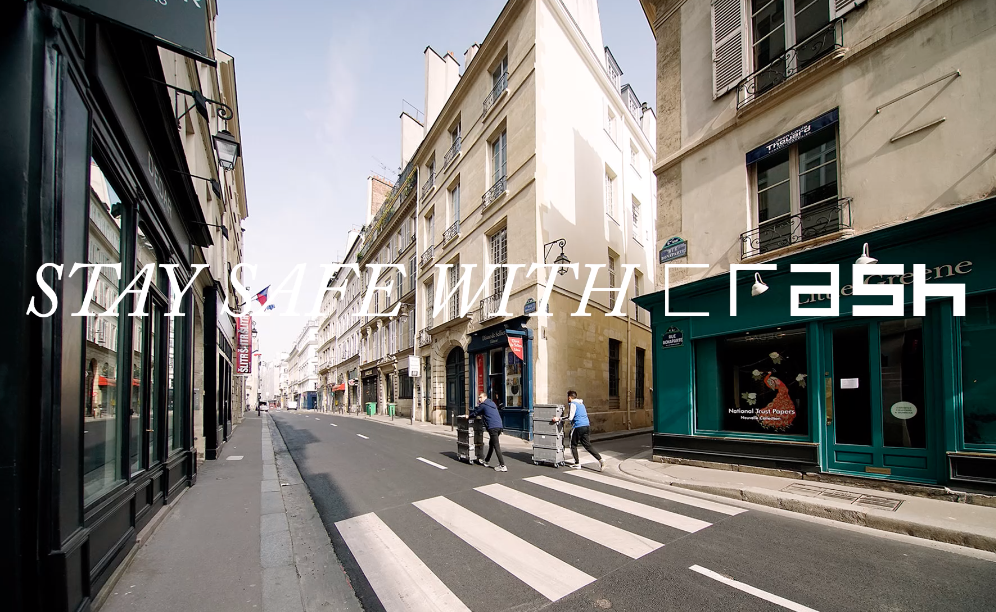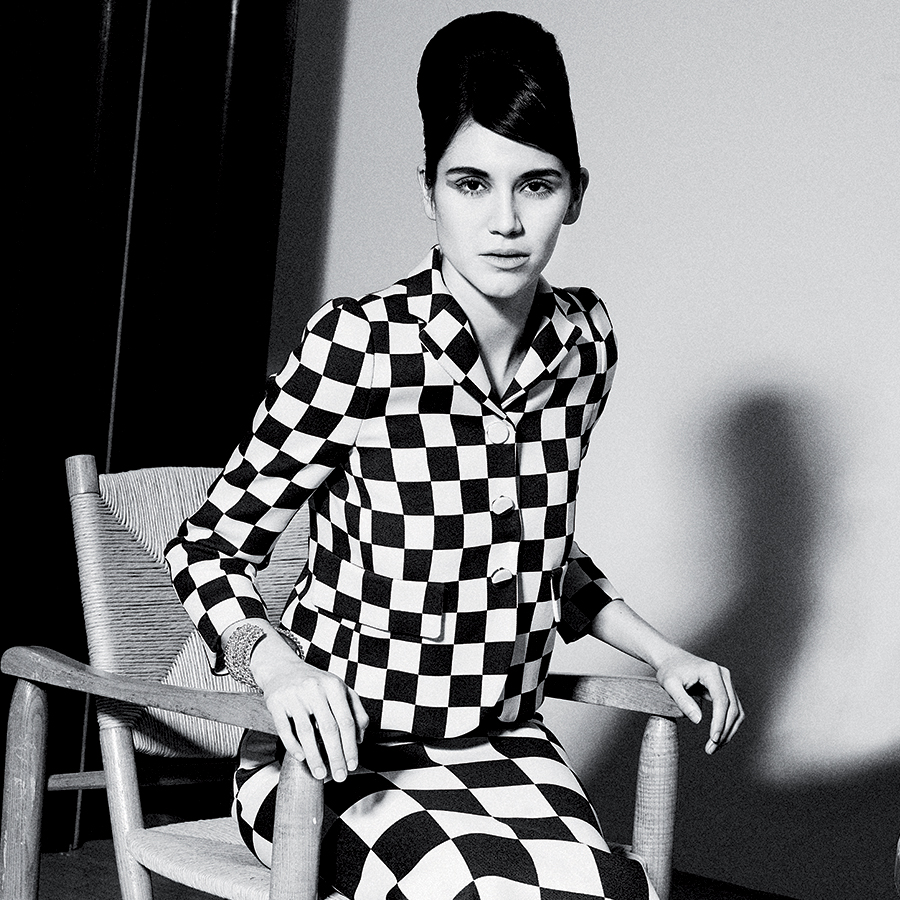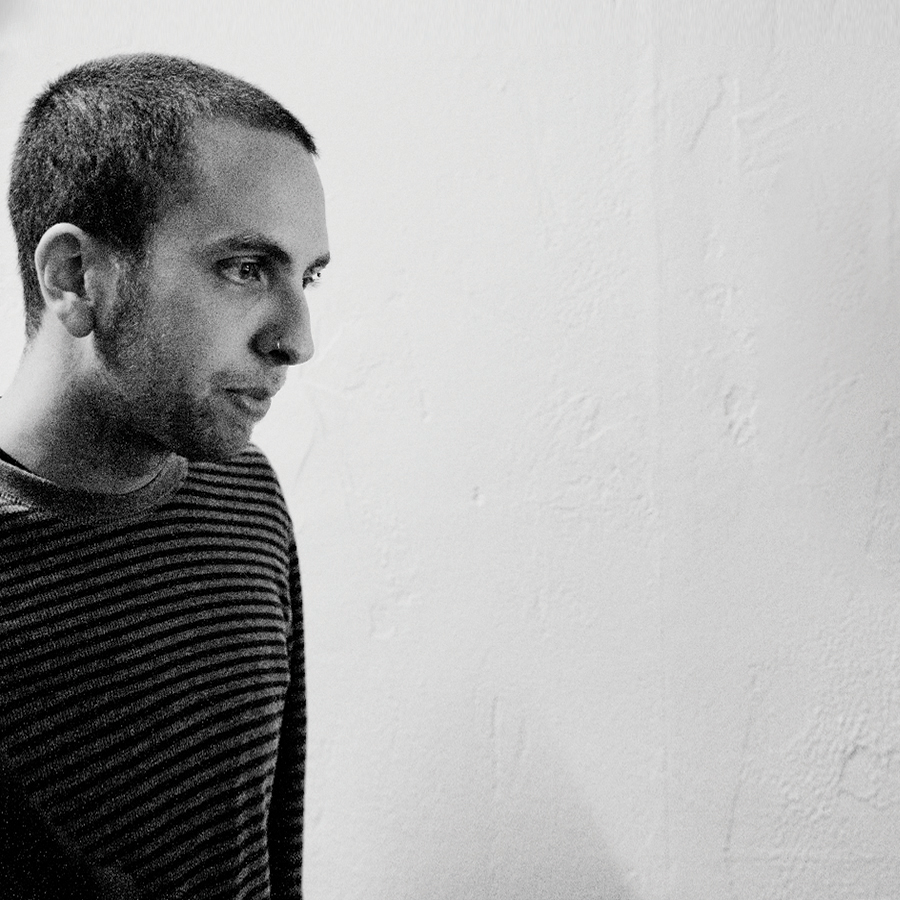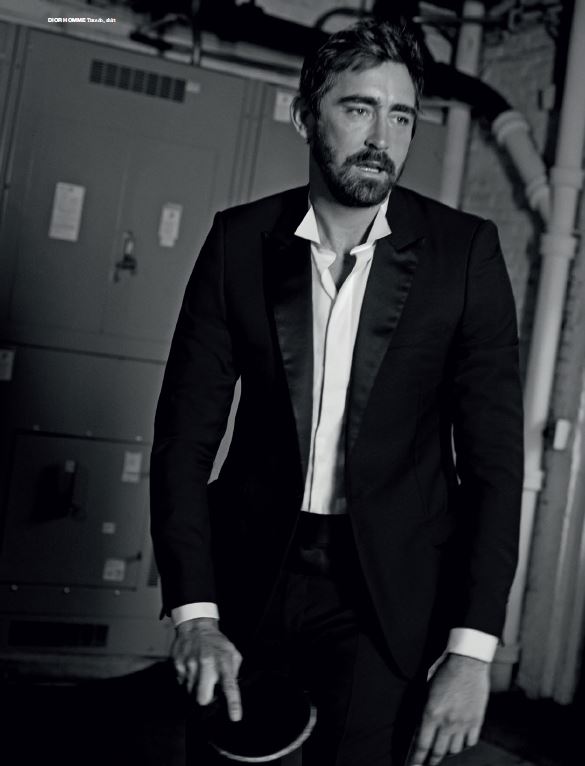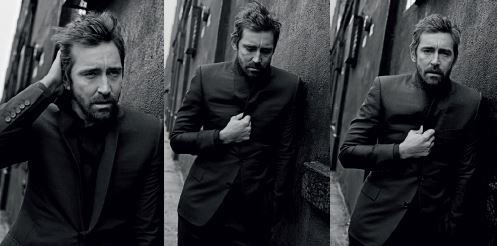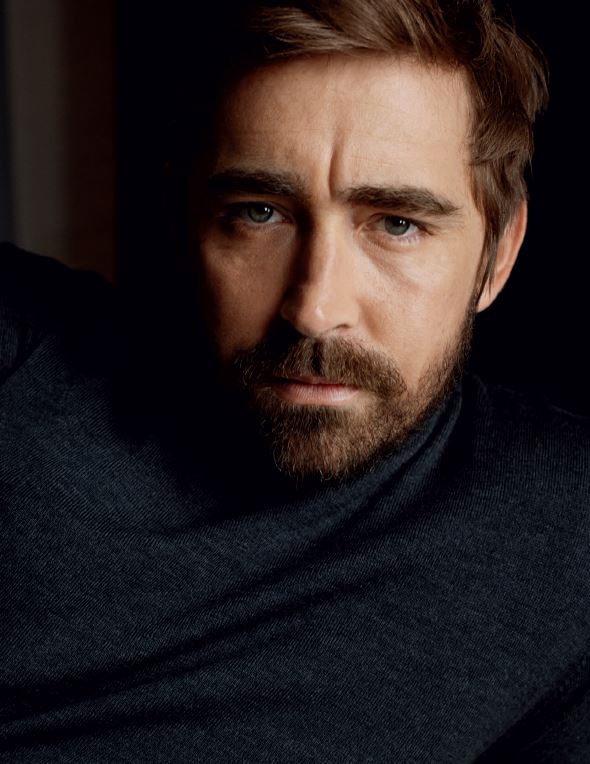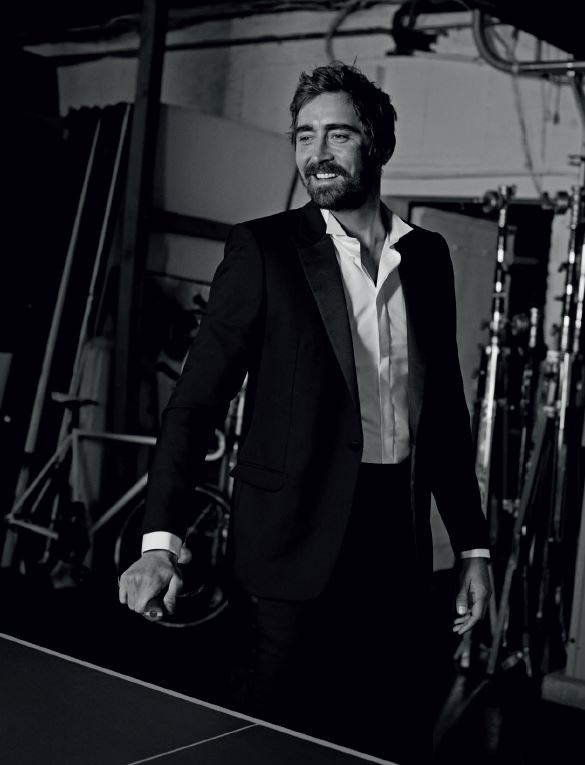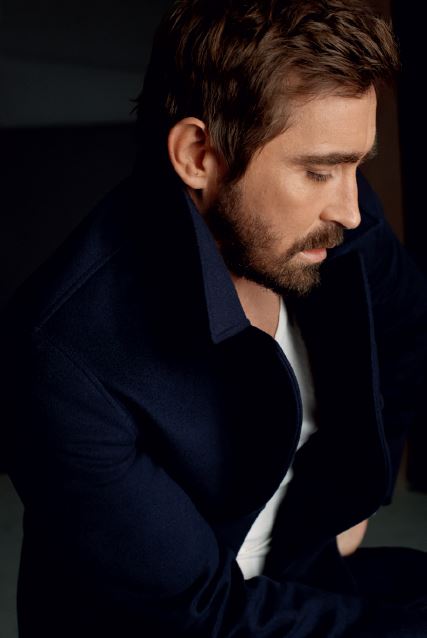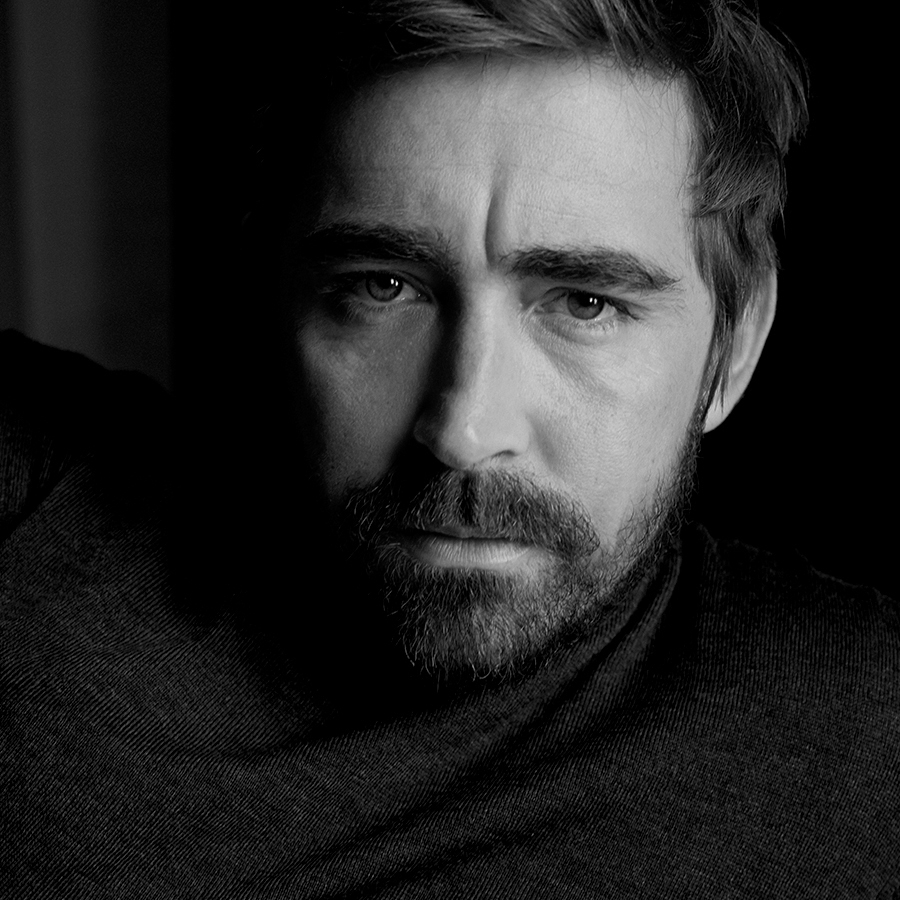
LEE PACE ON CHARACTERS
By Crash redaction
LEE PACE’S ACTING CAREER IS ANYTHING BUT ORDINARY. FIRST RISING TO PROMINENCE FOR HIS ROLE AS A TRANSGENDER WOMAN DATING A US ARMY PRIVATE IN “SOLDIER’S GIRL”, HE IS WIDELY KNOWN FOR HIS PORTRAYAL OF THRANDUIL THE ELVENKING IN PETER JACKSON’S “HOBBIT” TRILOGY. A TRUE CHAMELEON, THE TEXAS NATIVE ALSO STARS IN “HALT AND CATCH FIRE”, THE CRITICALLY ACCLAIMED TV SERIES RETRACING THE PERSONAL COMPUTER REVOLUTION FROM THE OFT OVERLOOKED SILICON PRAIRIE OF DALLAS. AT HOME ON STAGE AND SCREENS BOTH BIG AND SMALL, THE MAN WITH THE DEEP VOICE WILL SOON APPEAR IN STEPHEN FREARS’S FORTHCOMING LANCE ARMSTRONG BIOPIC. WE HAD A CHAT WITH THE EXCEPTIONALLY GIFTED ACTOR ABOUT HIS CAREER, HIS PAST ROLES AND HIS TAKE ON WHAT IT MEANS TO BE AN ACTOR.
How did you first get into acting?
I was a swimmer when I was a kid but I would have really bad earaches because of the water. Eventually I had to undergo some surgeries. It was painful all the time, but swimming was my whole life: I would swim all the time at school and after school. Unfortunately I had to stop and figure out something else to do. My mother suggested I take a drama class, so that’s what I did and that was the start of it! I was only twelve or thirteen.
Obviously she made the right choice since you continued to pursue acting.
I worked for a local theater in Houston, Texas called the Alley Theater and I auditioned for the Juilliard School when I was 17. I got in and went to New York to study acting for four years. And when I got out of acting school, I started doing plays, movies and television.
Your career is unique in that you have starred in blockbusters like “The Hobbit”, but you have also done TV series like “Pushing Daisies” and acted on Broadway. Do you have a preference? How do you choose what you are going to do?
I don’t have any preference; I find them all very interesting. They are all very different projects and each of them has its own challenges. Every job, every character, every director is different. My job is all about helping the directors tell their stories. It’s always different, no matter what the form is. The diversity of my career is what I’m most proud of and I feel very fortunate to be a part of the theater community in New York, doing off-Broadway plays as well as Broadway plays since I’ve finished school. It is such an incredible community of people and it is one of the reasons I don’t want to leave New York, because I value being part of this community so much.
You play Thranduil in “The Hobbit” franchise and also starred in “Guardians of the Galaxy”. Do you have a thing for sci-fi and fantasy?
I do! I’m a fan of those kinds of movies. You know, both of these movies are very different from each other. I’m always amazed by the work of these very creative people, as well as their imaginations. With “The Hobbit”, it’s not only J.R.R. Tolkien but Peter Jackson as well as Frances Walsh and all the incredible team and actors that got involved in that world. It’s not real life, it’s something extraordinary. It’s the same thing with “Guardians of the Galaxy”. It excites me to stretch my imagination, which I think is important as an actor. You don’t have to necessarily play reality, you can play something extraordinary.
What was it like working with Peter Jackson on “The Hobbit”?
It was such a privilege to work with someone like Peter Jackson, because not only is he an innovator and someone who has contributed so much to the arts and cinema but he is an incredible person and a real inspiration to be around. When he imagines something, he imagines it big, bigger than you could ever imagine it. To be on set with him and try to
figure out what it is to tell his story is a real privilege. I’ve learned so much from him.
Was it difficult at times to try to translate his extraordinary imagination?
Not at all! He is so clear and I felt like I always understood his directions.
You also worked with Steven Spielberg on “Lincoln”. How was that experience?
It was also an incredible experience. I worked with both Peter Jackson and Steven Spielberg in the same year, so it really was a great year for me! I still can’t believe it! It’s no mystery to me why I’ve loved his movies for so many years after being on set with him. He understands the stories so well, he understands film so well. It’s like when an artist understands the colors. That’s Steven Spielberg. He just expresses himself through the collaborative process of film. Everyone on that set – and there were so many great actors
– was a part of the fabric of that movie. I was there just soaking it in. I couldn’t believe I was so fortunate to be on set with Steven Spielberg.
Can you tell me more about the Lance Armstrong biopic you’re currently working on with Stephen Frears?
I play Bill Stapleon, who was Armstrong’s agent. We’re both Texans, actually. Stephen Frears is another one of the incredible directors I’ve gotten to work with. I’ve always
loved his movies. Actually, I’m also a huge bicycle fan and I cycle myself. I’ve always been interested in the Tour de France and how the experience must have been for the cyclists. I watch the race and I keep up with it every year. I find it so interesting to see the politics and the drama that go on behind it. And these guys are doing extraordinary races! I also find the history of it very interesting, the beginning of the race, how this iconic race came to be Though, in the early days, the race sounded basically like a bar crawl: it was about going from one beer to the next! (laughs) At least, that’s how it seemed to me, though I’m sure it was much more complicated than that!
In addition to film, you have also done a lot of television. You recently starred in “Halt and Catch Fire” and you are now preparing its second season. What is your character like in the show?
I play a character named Joe MacMillan. I think he is very representative of the state of mind of the 1980s in America. He’s ambitious, he wants to win and to make a lot of money. He wants to bring a product to the market that people don’t know they want yet. There was a time when people didn’t have computers and households couldn’t even afford them. But the potential of what computers could mean was just beginning to become apparent. Joe MacMillan is someone who sees what that potential is and sees how extraordinary the world will be once everyone has computers. So the first season was about entering that game and getting a computer on the market. I find him very interesting and at the same time very complicated to portray. He’s like a riddle. It’s the riddle of life: we go through life and we want to succeed, we want to do well. You want to “be the man” and accomplish something. I think if you spend too long trying to do that, you’ll end up being disappointed.
How do you usually prepare for your roles? Do you have some sort of ritual?
I’m kind of a thinker, I observe people. That is a big part of what I do. I think about the situations I’ve had in my own life and people I know. When you play a character – at least a human character as opposed to an alien – people around you are the resource to your understanding of that character. Plus, I live in New York City so I see different kinds of people every day. I’m also a big reader so I find my inspiration in books. There’s nothing like the private conversation you have with an author while reading a book. It takes a lot of meditation to understand why people do what they do, what the point of life is, the mistakes that people make, those kinds of things.
Do you have those questions in mind when reading a new script?
Of course, though each script is different. “Halt and Catch Fire”, for example, is about why people do what they do, what happens when people’s intentions don’t necessarily turn into the results they hoped for. Observation and all of this introspection is very useful, but with projects like “The Hobbit” it’s different. For my role as Thranduil in “The Hobbit”, I was thinking about the woods, about wild animals in the woods, about the symbolism that J.R.R. Tolkien uses in that story, what that deep, dark, corrupted woods means. My character, the Elvenking, has locked himself underground for all these years, he doesn’t want to fight. What is that symbol about? Who is this wild and very powerful ancient creature? I’ve been thinking about it over the past three years and I would say that he’s more like a very old tree or a blizzard that comes in. He’s more like an ancient jaguar walking through the woods. He’s more like that than anything human, so there is a degree of freedom in preparing a role in that way.
Speaking of preparation, your role as a transgender woman in “Soldier’s Girl” was really your breakthrough performance. What was it like to take on this part when you were still a young actor?
It was my very first role and in so many ways it taught me how to do my job. Frank Pierson, who was such an incredibly gifted director, opened the door for me. At the time, I was just out of drama school and when you have the mind of a student your approach to the character is very different from the mind of a professional working in the industry. With this character that was so bold and very different from myself, Pierson encouraged me to use my imagination and to connect with myself. And with some of the notes he gave me I realized that I didn’t have to play a man playing a woman, I just needed to play the woman. I was saying to myself, “Don’t try to put it on, you don’t have to put it on”. That’s the story, this is a woman. She’s not a man pretending to be a woman, she’s a woman who was brave in a situation that was awful. That act of transformation wasn’t that far from myself, actually. This way of approaching the character gave me a lot of freedom. I was very fortunate to play that part early on because it started my career off on a journey where anything could happen. It means a lot to me that you mentioned “Soldier’s Girl”, even though it was a long time ago.
Aside from film, do you have any other passions?
I read a lot. Although I love the education I got at Juilliard, I miss not having a formal education in my life. I never went to college. I always find myself catching up with the education that I missed, mostly by reading. I get fascinated with certain authors and I read everything they wrote, or I get drawn into certain subjects.
You did act in Tom Ford’s “A Single Man”. Do you take any particular interest in fashion?
I think fashion is one of those great representations of modern culture. If you look back on our history, you learn so much about what people are by what they wore. When you
walk down the street in New York, you learn so much about people by what they wear, how they present themselves to the world. In some places you might see people wearing $20,000 worth of clothes! And if you cross the street you might see someone else wearing a simple sweater that they’ve probably had for the last three years! It’s such an interesting way to study people’s character, seeing what they choose to put on to the face the world. As an actor, there’s always a time when I get to wear a beautiful suit to a premiere or a cocktail party, and I guess this is one side of who I am. Then there is the other side of me that works at the farm and wears the same gray sweatshirt and the same blue jeans every single day!
And also as an actor, you relate to clothes in that you wear different costumes to portray each character. Do clothes help you bring out the character or are they just accessories?
There are some days where I feel the clothes do all the work for me!
How was your experience in front of the camera during the cover and editorial shoot for this issue of Crash?
I’ve taken pictures in the past but it was my first time shooting for Crash. I love Blossom Berkofsky, and the shoot went so well. Everything was just easy and comfortable, which was very nice because it felt very relaxed and authentic. It was like a nice day in Brooklyn! I got to wear Dior Homme and I love the pea coat I wore in the shoot. I think it’s the nicest jacket I’ve ever worn! Having your picture taken is pretty different from having to act in front of the camera. You don’t have to play a character, you just have to be yourself. And Blossom made that very easy.







